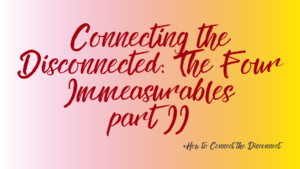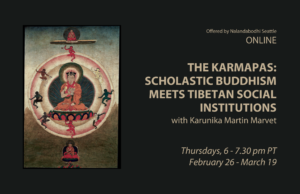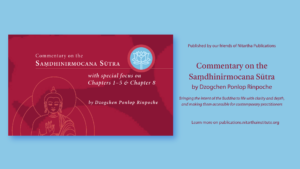It is becoming clear that we will not be returning to “normal” any time soon. Covid-19 cases continue to rise and alter the fabric of life. Racial tension and civil unrest reverberate throughout communities, drawing attention to and denouncing systems based on inequity and violence. The fundamental structures of society, along with our daily routines, are being challenged, and it may feel as if they are collapsing before our very eyes.
We are all experiencing the cumulative stress of uncertainty and the emotional toll of pain and disillusionment. And we find ourselves confronted with the idea of finding a “new normal.”
The notion of refuge is a core theme in all Buddhist traditions, and it can help us develop strength and resiliency. Its intention is to help us surrender our confused self in order to reveal our true self. Dzogchen Ponlop Rinpoche explains, “What we surrender to, our higher power, is the awakened nature of mind itself, which is intrinsically healthy and compassionate.” (Rebel Buddha, 141)
Taking refuge may be experienced as connection to a source of wisdom or giving oneself over to a source of protection. As Buddhist practitioners, we train in going for refuge as part of the spiritual path. When I go for refuge in meditation, I am able to rest my burdens, and I arise feeling lighter. The practice of taking refuge can be particularly useful in times of crisis.
We start by identifying our own sources of refuge. Refuges include people, places, memories, ideas, and ideals. For many, nature is a source of refuge. A refuge can be anyone or anything that provides protection or sanctuary, so that you can let down your guard and gather strength and wisdom (Rick Hanson, Buddha’s Brain, 93).
Going for refuge has the power to shift your focus away from an ordinary way of thinking or reacting in order to fill you with positive influences. Over time, this experience becomes more familiar, comforting, and nourishing.
Resting in a source of refuge can help you re-center and establish your intention toward health and wisdom. It can create a sense of safety and homecoming to help you through the pains of upheaval and groundlessness.
Contemplative Practice
- Go to a place of refuge. Or bring to mind a refuge.
- Allow your mind to quiet and open to the sensory nature of the refuge. Let the experience come alive in momentary awareness.
- Notice the sense of connection and appreciate the refuge’s wholesomeness, its positive influence in your life, its shelter and protection.
- Say softly in your mind: I find refuge in . Or wordlessly feel yourself entering refuge there.
- Notice how it feels to have entered this refuge. Let that feeling become a part of you. Rest in this feeling.
- Know that you carry this source of refuge with you every day. You can recall it in a time of need.

Rachel Seely, MA, LPCC is a psychotherapist specializing in trauma treatment and spiritual growth. As an ordained healthcare chaplain she also draws from her background in MA Buddhist Studies & Clinical Pastoral Education, Mindfulness-based Stress Reduction, and her 25 years of meditation training and practice with Nalandabodhi.






